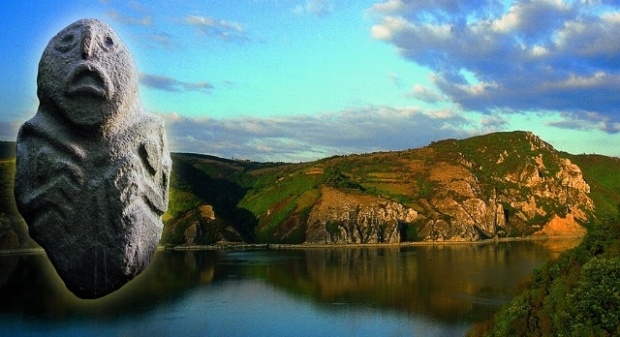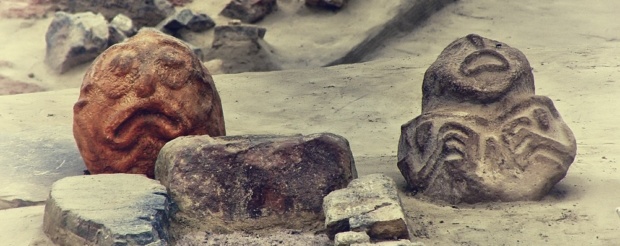Travel more than 10,000 years in the past
 Lepen Whirl (Serbian: Lepenski Vir) is an important Mesolithic archaeological site located in Serbia in the central Balkan peninsula. The latest radiocarbon and AMS data suggest that the chronology of Lepen Whirl is compressed between 9500/7200-6000 BC. There is some disagreement about the early start of the settlement and culture of Lepen Whirl. But the latest data suggest 9500-7200 to be the start. The late Lepen Whirl (6300-6000 BC) architectural development was the development of the Trapezoidal buildings and monumental sculpture. The Lepen Whirl site consists of one large settlement with around ten satellite villages. Numerous piscine sculptures (pertaining to fish) and peculiar (different, strange) architecture have been found at the site.
Lepen Whirl (Serbian: Lepenski Vir) is an important Mesolithic archaeological site located in Serbia in the central Balkan peninsula. The latest radiocarbon and AMS data suggest that the chronology of Lepen Whirl is compressed between 9500/7200-6000 BC. There is some disagreement about the early start of the settlement and culture of Lepen Whirl. But the latest data suggest 9500-7200 to be the start. The late Lepen Whirl (6300-6000 BC) architectural development was the development of the Trapezoidal buildings and monumental sculpture. The Lepen Whirl site consists of one large settlement with around ten satellite villages. Numerous piscine sculptures (pertaining to fish) and peculiar (different, strange) architecture have been found at the site.
Seven successive settlements were discovered on the Lepen Whirl site, with the remains of 136 residential and sacral (relating to sacred rites or symbols) buildings dating from 9500/7200 BC to 6000 BC.
The sculptures are numerous buying flagyl online prehistoric figurines dating from 7000 BC found intact in the Lepen Whirl. They are present in all the following layers until the end of the distinct Lepen Whirl culture. All the sculptures were carved from round sandstone cobbles found on the river banks.
The sculptures can be separated into two distinct categories, one with simple geometric patterns and the other representing humanoid figures. The latter are the most interesting. All of these figurative sculptures were modeled in a naturalistic and strongly expressionistic manner. Only the head and face of the human figures were modeled realistically, with strong brow arches, an elongated nose, and a wide, fish-like mouth. Hair, beard, arms, and hands can be seen on some of the figures in a stylized form. Many fish-like features can be noticed. Along with the position which these sculptures had in the house shrine, they suggest a connection with river gods.


